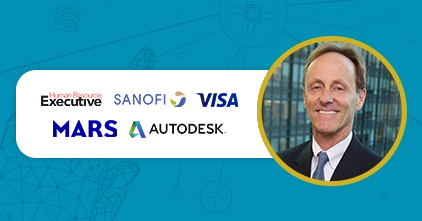L&D leaders are faced with a daunting challenge— creating a corporate training program for a multigenerational workforce whose needs and preferences differ. And we know just the solution:

More and more companies are seeing a rich diversity not just of cultures in the workplace, but also of generations. And this is actually a great thing!
A multigenerational workforce offers a competitive advantage. It gives employees an opportunity to learn from experience and benefit from the innovation that a fresh perspective can bring. It ensures that where millennials lack experience, Gen X-ers can provide mentorship to bridge the gap. In return, millennials can assist Baby Boomers in using digital technology to help them keep up with the modernized world.
But, of course, the presence of multiple generations means that they have a range of differences — from working methods, motivations, and ethics, to communication styles. Most importantly, they differ in how they choose to learn. For this reason, L&D leaders should provide opportunities that cater to the needs of all employees, regardless of what generation they’re from.
This is indeed a great challenge. But one that can be solved with the right advice. So, here are some insights into providing training to a multigenerational workforce:

They all need learning and development
As multiple generations now coexist in the same workforce, HR departments tasked with leading, motivating, and retaining new and existing employees are posed with a challenge: creating an effective and engaging learning and development program that suits the needs and roles of everyone in the organization.
This is a training crisis L&D leaders should be addressing. Especially since a Cornerstone report revealed that 73% of Baby Boomers find that their employers aren’t investing in their learning compared to 53% of Millennials who say otherwise. This stems from the idea that older workers will be retiring soon, needing little to no training.
But a Pew report has shown that the majority of Baby Boomers aren’t leaving the workforce anytime soon. In fact, the number of Baby Boomers in the 2018 workforce is higher than it’s ever been, rising to 29% from the Silent Generation’s 21% when they were the same age. With this, older workers are definitely looking to sharpen existing skills and even learn new ones just as much as younger generations.
Understand who they are (and what they need)
With each demographic having a unique set of needs and goals, it’s important to define those first before designing your learning program. Do they need to develop new skills? Should they hone existing ones? What strategy will best address this? In that way, their learning will help them achieve their objectives and is applicable to their work.
The thing is, an approach that works for Baby Boomers and Gen X may not appeal to Millennials and Gen Z, and vice versa. Younger workers like having high-quality multimedia they can access, collaborating within teams, and receiving feedback. On the other hand, older workers are accustomed to face-to-face training sessions and working independently. As you may have observed, there’s a sizable difference in the way these distinct generations work and learn.
As an L&D leader, it’s important to pay attention to these traits, not to separate or label employees, but to better understand and be able to provide the right tools and resources for them. To create an effective multigenerational training that speaks to everyone, have a hyper-personalized blend of these three things: tech, content, and the human element.

Getting the right mix
The workforce is aging, and we have to keep training our teams in new methodologies, skills, and attitudes. Using technology is one of them. Although technology presents a challenge as capabilities differ among the generations, taking your L&D digital is still possible, and beneficial even.
Since adults often learn on the go, your L&D should go beyond the walls of the office and into their mobile devices. With digital learning, you offer them the opportunity to absorb and retain the information anytime, anywhere, and when they need it the most. Thus, making them more motivated and engaged.
As for what they’ll be learning, it’s always best to target their needs and goals directly instead of providing them with resources they’re unlikely to use at work or in everyday life. Adult learners, regardless of their generation, need to be able to see the relevance of what they are learning.
That’s why your training program should offer them the skill sets they need to improve their work performance. In this way, those skills can be constantly applied; leaving no room for wasted knowledge and time.
As technology takes over how people are learning, the human element in learning has now been overlooked. And while Baby Boomers are willing and ready to go online, they need interaction. They need that all-important human connection. To feel like they’re part of an online learning community. The same goes for Millennials and Gen Z who still need guidance in their learning. Incorporating the social learning aspect into your learning tech promotes collaboration, communication, and idea-sharing.
Flexibility is certainly key to approaching generational differences. With all that said, designing your L&D strategy around the right mix of these three things will surely help you cater to your company’s multi-generational workforce.

Making the most out of diversity
For the first time in history, four generations are working side by side. Each with different leadership, communication, and career development styles. They have a variety of opinions, ideas, and skills. This means your team members can tackle challenges and obstacles that a less functional team would find daunting. Hence, it’s essential for organizations to start leveraging this.
While it’s challenging to find common ground for your multigenerational employees’ talent strategy, know that it’s not impossible. It may seem like a lot of work. But a cohesive multigenerational team will make your investment in them all worthwhile. All it takes is defining their needs and getting the right program that targets those needs— whether they’re a Baby Boomer, Gen X, Millennial, or Gen Z.



